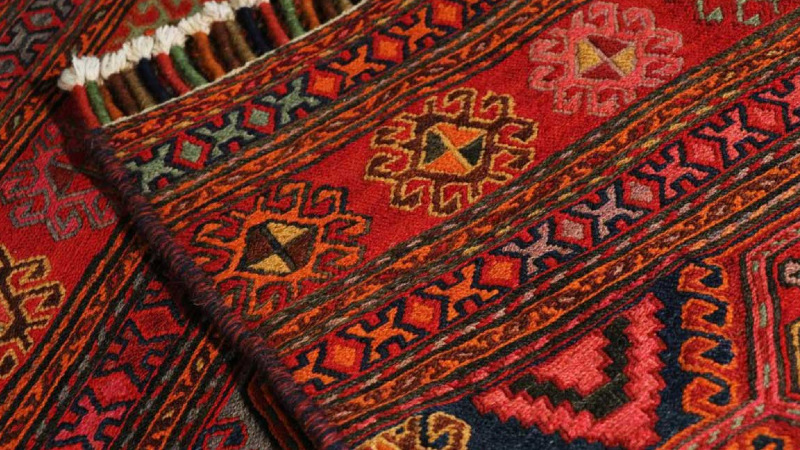Kilim is a type of simple hand-woven fabric made of cotton or wool and is used as a carpet and underlay, and in some cases as a type of handicraft for making bags, matkas, etc. Iranian rugs are one of the oldest handicrafts in Iran, which has a special place in traditional Iranian culture.
About the rug
Rug weaving is one of the oldest crafts whose historical background goes back to more than 2500 years BC. The rugs weave is much simpler than the carpet, and probably for this reason, it was more prevalent among ancient people. The wool of domestic animals such as sheep is used to weave rugs and is usually more popular among livestock breeders. Apart from Iran, rug weaving is known as one of the popular handicrafts in India, Turkmenistan, Pakistan, Afghanistan (Iranian carpet has many fans in Afghanistan, and it is called the Iranian rug or Chilim.) Syria and Lebanon.
Difference between rug and carpet
If you are one of those interested in handicrafts, you have probably come across the question of what are the differences between carpets and rugs? Each of these two products is classified as a handmade product and is used for different purposes. The most important differences between carpet and rug are:
Texture type
Unlike the carpet, the rug is woven very simply, and in terms of the strength of the texture, it is softer, and we will need less time to weave it.
Texture features
If you look at any type of Iranian carpet, you will see that the knots of the carpet are located in the middle of its warp and weft, and because of the presence of fluff in the middle of the warp and weft of the carpet, this product looks more voluminous. In a rug, this is never the case and you can easily see the woven knots.
The price of rugs and carpets
Carpet weaving is much more difficult and time-consuming than rug weaving. For carpet weaving, we need a special design and also tools that will eventually increase the price of the woven carpet, but this is not the case with the rug. The price of the rug is much cheaper than the carpet due to its simple texture.
Dimensions of rugs and carpets
Rugs are usually woven in small sizes, while carpets are used to cover larger rooms, and their dimensions are much larger than carpets.
Introduction of Iranian carpet
Iranian rug is one of the popular handicrafts among Iranians, which is usually woven by the nomads of different parts of Iran. According to some historical documents, the history of Iranian rugs goes back to the period of the Achaemenid king Xerxes. In this period, animal husbandry was more prosperous compared to agriculture, and sheep’s wool was used to weave a variety of hand-woven handicrafts, including rugs.
Types of Iranian rug
The main rug weavers in Iran are nomadic women, but rural women in different parts of Iran also weave different types of rugs. Based on the geographical conditions and customs of each region in Iran, there is a significant variation in the types of rug woven in Iran.
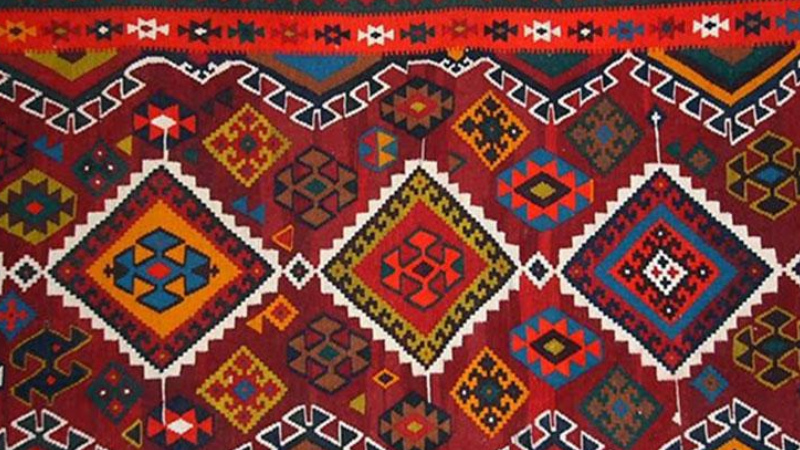
Shahsevan rugs
The Shahsevan tribe is one of the most famous Iranian nomadic groups. The designs used in Shahsevan rugs include animals such as horses, deer, and various birds, and many geometric shapes are also used in its texture. The variety of this type of Persian rug is very high and it is rare to find even two rugs with the same design among Shahsevan rugs. This rug is used both as a mattress and as a cover for a horse’s saddle.
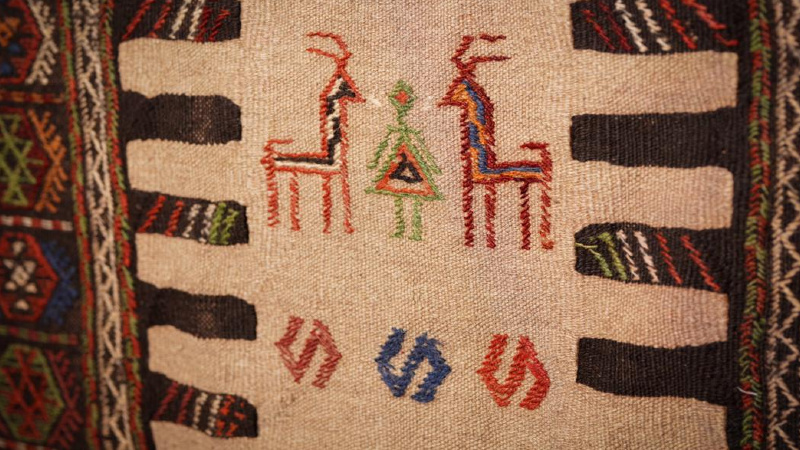
Lori rugs
This type of Iranian rug is woven by the Lor tribe in Iran. The color scheme of this rug consists mostly of green, black, white, and blue colors, and designs of animals and geometric shapes can be seen on it.
Khamsa rugs
The reason for naming this type of rug is that Khamsa rugs are handicrafts attributed to five nomadic tribes in Shiraz. The main color in the design of this rug is chosen from dark colors, and there are shapes like rhombuses and stars in its texture.
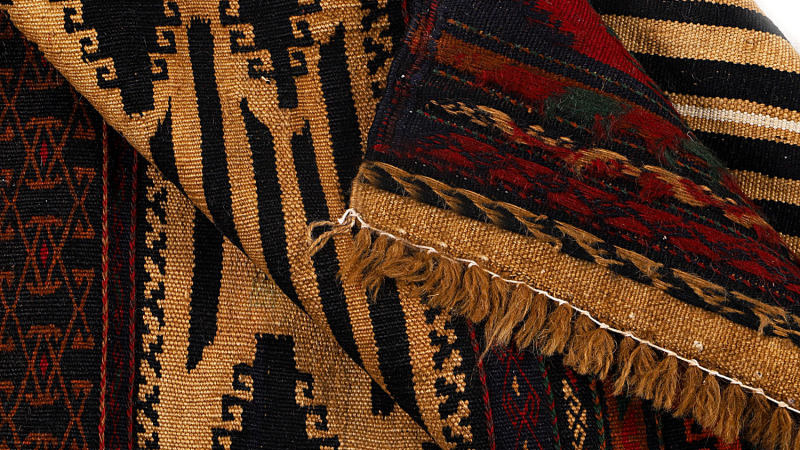
Balochi rugs
This rug is one of the most authentic Iranian rugs that is woven by the Baloch people. The design of this rug is striped and brown, dark blue, dark red, light red, green and yellow colors are used in it.
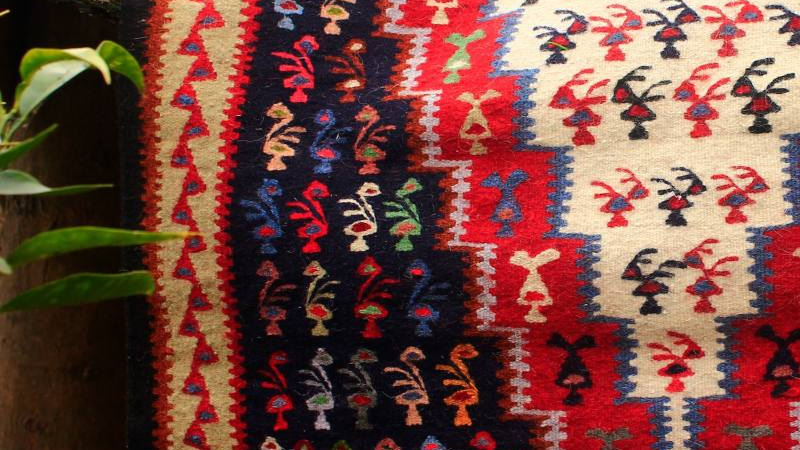
Harsin rugs
One of the highest quality Iranian rugs is woven in Harsin (a region in Kermanshah province). Goat wool is used for the texture of this rug, and it has a very good durability and longevity. The color scheme of this rug consists of green, white, red, magenta and navy colors.
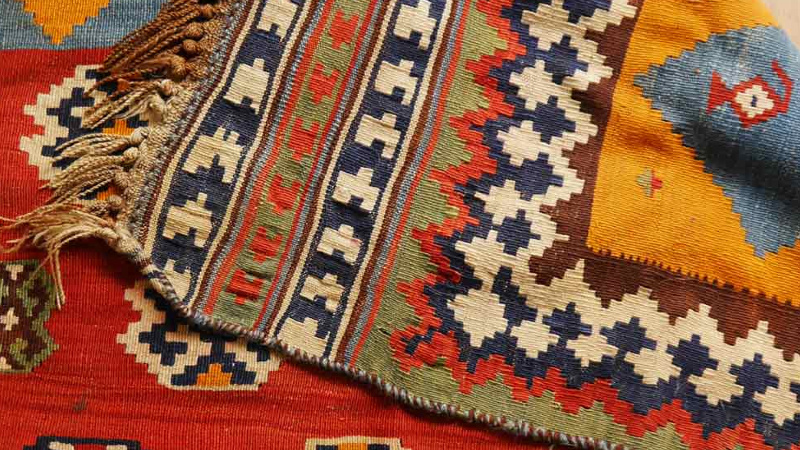
Qashqai rugs
This rug, like Shahsevan rugs, has many designs. The reason for this variety of design is related to the living conditions of the Qashqai people in Iran. The areas that these people choose to live in have many natural landscapes that they use as ideas for rug design. Animals such as deer, goat and peacock along with octagonal geometric shapes and eight-pointed star are used in the design of this rug.
Saneh rugs
This rug is one of the most delicate Iranian rugs that is woven in the city of Sanandaj. Diagonal lines, trange designs and very beautiful colors are used in the texture of this rug.
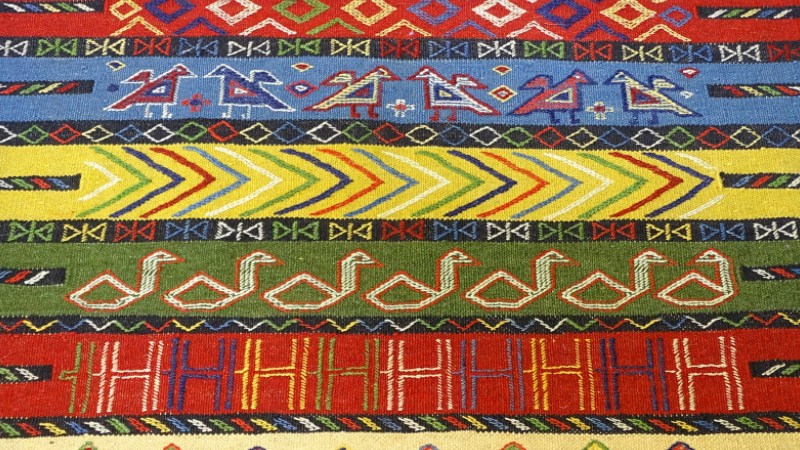
Turkmen rugs
Bright red color is the main feature of Turkmens rugs. Each of the woven rugs of this type has an original design that is exclusively defined for each weaver’s family. Hexagons and octagons are two geometric shapes that are very widely used in the texture of this rug.
Zarandi rugs
This type of Iranian carpet is woven in the two villages of Zarand and Saveh in Qazvin province. The type of texture of this rug is fine and has very good durability.
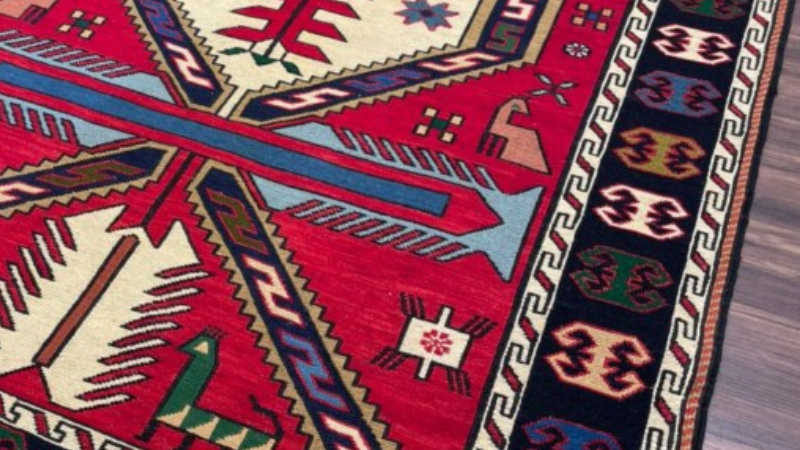
Afshari rugs
Many stars are the main characteristic of this type of rug. These stars are located inside many rhombuses that are placed next to each other and diagonally.
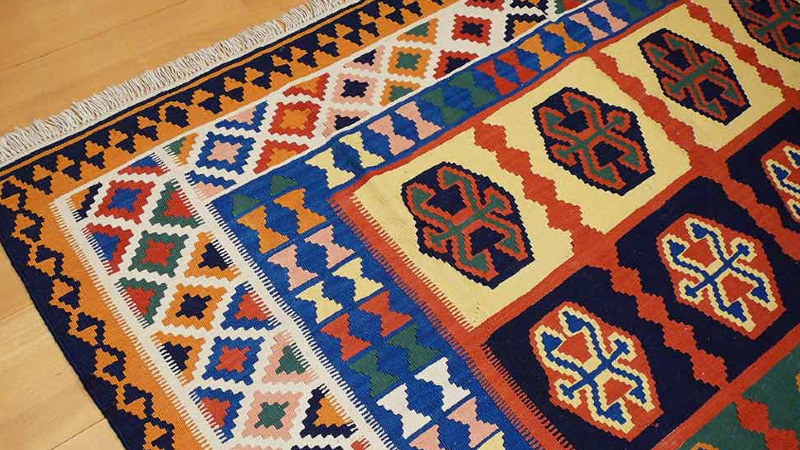
Persian Kilim care
Iranian rugs, like carpets, have very good resistance and if used correctly, they have a significant lifespan. Observing the following can increase the life of your carpet:
• If you use a rug as a type of underlay, it is better not to place a sofa, vase, or any other item on it that increases the possibility of tearing the rug.
• If your rug gets dirty, wash it. To wash the rug, you can use shampoo for washing carpets and some lukewarm water.
• If your rug is torn, repair it as soon as possible.
• Do not expose rugs or handicrafts made from rugs to sunlight for a long time. The light and heat of the sun cause the rug to rot and lose its color.

